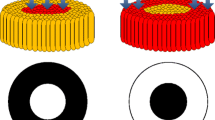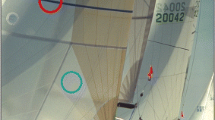Abstract
Local feature descriptor is a fundamental representation for image patch which has been extensively used in many computer vision applications. In this paper, different from state-of-the-art features, a novel biologically inspired local descriptor (BILD) is proposed based on the visual information processing mechanism of ventral pathway in human brain. The local features used for constructing BILD are extracted by a two-layer network, which corresponds to the simple-to-complex cell hierarchy in the primary visual cortex (V1). It works in a similar way as the simple cell and complex cell do to get responses by applying the lateral inhibition from different orientations and operating an improved cortical pooling. To enhance the distinctiveness of BILD, we combine the local features from different orientations. Extensive evaluations have been performed for image matching and object recognition. Experimental results reveal that our proposed BILD outperforms many widely used descriptors such as SIFT and SURF, which demonstrate its efficiency for representing local regions.













Similar content being viewed by others
References
Adelson EH, Bergen JR (1985) Spatiotemporal energy models for the perception of motion. J Opt Soc Am A 2(2):284–99
Agrawal M, Konolige K, Blas MR (2008) CenSurE: Center surround extremas for realtime feature detection and matching. In: Proceedings of the ECCV, pp 102–115
Alahi A, Ortiz R, Vandergheynst P (2012) FREAK: Fast Retina Keypoint. In: Proceedings of the IEEE International Conference on CVPR, pp 510–517
Azzopardi G, Petkov N (2012) A CORF computational model of a simple cell outperforms the Gabor function model. Biol Cybern 106(3):177–189
Azzopardi G, Petkov N (2013) Trainable COSFIRE filters for keypoint detection and pattern recognition. IEEE Trans Pattern Anal Mach Intell 35(2):490–503
Bay H, Tuytelaars T, Van Gool L (2006) SURF: Speeded up robust features. Proc ECCV, PT 1:404–417
Beghdadi A, Larabi MC, Bouzerdoum A, Iftekharuddin KM (2013) A survey of perceptual image processing methods. Signal Process: Image Commun 28(8):811–831
Belongie S, Malik J, Puzicha J (2002) Shape matching and object recognition using shape contexts. IEEE Trans Patt Anal Mach Intell 24:509–522
Berkes P, Wiskott L (2005) Slow feature analysis yields a rich repertoire of complex cell properties. J Vis 5:579–602
Calonder M, Lepetit V, Strecha C, Fua P (2010) BRIEF: binary robust independent elementary features. In: Proceedings of the ECCV, pp 778–792
Carandini M, Heeger DJ (1994) Summation and division by neurons in primate visual cortex. Science 264(5163):1333–1336
Carneiro G, Jepson AD (2003) Multi-scale phase-based local features. In: Proceedings of the IEEE international conference on CVPR, pp 736–743
Cui CH, Ngan KN (2013) Global propagation of affine invariant features for robust matching. IEEE Trans Image Process 22(7):2876–2888
Dalal N, Triggs B (2005) Histograms of oriented gradients for human detection. Proc IEEE Int Conf CVPR 1:886–893
Daugman JG (1985) Uncertainty relations for resolution in space, spatial frequency, and orientation optimized by two-dimensional visual cortical filters. J Opt Soc Am A 2(7):1160–1169
Dorko G, Schmid C (2003) Selection of scale-invariant parts for object class recognition. In: Proceedings of the ninth IEEE international conference on computer vision, pp 634–640
Fergus R, Perona P, Zisserman A (2003) Object class recognition by unsupervised scale-invariant learning. Proc IEEE Int Conf CVPR 2:264–271
Ferrari V, Tuytelaars T, Van Gool L (2004) Simultaneous object recognition and segmentation by image exploration. In: Proceedings of the ECCV, pp 40–54
Freeman WT, Adelson EH (1991) The design and use of steerable filters. IEEE Trans Pattern Anal Mach Intell 13:891–906
Fukushima K (1980) Neocognitron: a self-organizing neural network model for a mechanism of pattern recognition unaffected by shift in position. Biol Cybern 36(4):193–202
Fukushima K (2003) Neocognitron for handwritten digit recognition. Neurocomputing 51:161–180
Van Gool L, Moons T, Ungureanu D (1996) Affine/photometric invariants for planar intensity patterns. Proc ECCV Lect Notes Comput Sci 1064:642–651
Griffin G, Holub A, Perona P (2007) Caltech-256 object category dataset. Technical Report 7694, California Institute of Technology
Grossberg S (2007) Towards a unified theory of neocortex: laminar cortical circuits for vision and cognition. Prog Brain Res 165:79–104
Hebb DO (1949) The organization of behavior. Wiley, New York
Huang YZ, Huang KQ, Tao DC, Tan TN, Li XL (2011a) Enhanced biologically inspired model for object recognition. IEEE Trans Syst Man Cybern B 41(6):1668–1680
Huang KQ, Tao DC, Yuan Y, Li XL, Tan TN (2011b) Biologically inspired features for scene classification in video surveillance. IEEE Trans Syst Man Cybern B 41(1):307–313
Hubel DH, Wiesel TN (1962) Receptive fields, binocular interaction and functional architecture in the Cat’s visual cortex. J Physiol 160:106–154
Jiang AW, Wang CH, Xiao BH, Dai RW (2010) A new biologically inspired feature for scene image classification. In: Proceedings of the IEEE international conference on ICPR, pp 758–761
Jones JP, Palmer LA (1987) An evaluation of the two-dimensional Gabor filter model of simple receptive fields in cat striate cortex. J Neurophysiol 58:1233–1258
Ke Y, Sukthankar R (2004) PCA-SIFT: a more distinctive representation for local image descriptors. Proc IEEE Int Conf CVPR 2:506– 513
Kobatake E, Tanaka K (1994) Neuronal selectivities to complex object features in the ventral visual pathway of the macaque cerebral cortex. J Neurophysiol 71:856–867
Kouh M, Poggio T (2008) A canonical neural circuit for cortical nonlinear operations. Neural Comput 20:1427–1451
Lazebnik S, Schmid C, Ponce J (2006) Beyond bags of features: spatial pyramid matching for recognizing natural scene categories. In: Proceedings of the IEEE international conference on CVPR, pp 2169–2178
Leutenegger S, Chli M, Siegwart R (2011) BRISK: binary robust invariant scalable keypoints. In: Proceedings of ICCV, pp 2548–2555
Li J, Allinson NM (2008) A comprehensive review of current local features for computer vision. Neurocomputing 71:1771–1787
Lowe DG (2004) Distinctive image features from scale-invariant keypoints. Int J Comput Vis 60:91–110
Ma BP, Su Y, Jurie F (2012) BiCov: a novel image representation for person re-identification and face verification. Proc British Mach Vis Conf 57:1–11
Ma BP, Chai XJ, Wang TJ (2013) A novel feature descriptor based on biologically inspired feature for head pose estimation. Neurocomputing 115:1–10
Marino J, Schummers J, Lyon DC, Schwabe L, Beck O, Wiesing P, Obermayer K, Sur M (2005) Invariant computations in local cortical networks with balanced excitation and inhibition. Nat Neurosci 8(2):194–201
Mikolajczyk K, Schmid C (2001) Indexing based on scale invariant interest points. Proc 8th IEEE Int Conf Comput Vis 1:525–531
Mikolajczyk K, Schmid C (2005a) A performance evaluation of local descriptors. IEEE Trans Pattern Anal Mach Intell 27:1615–1630
Mikolajczyk K, Leibe B, Schiele B (2005b) Local features for object class recognition. In: Proceedings of the 10th IEEE international conference on computer vision, vols. 1 and 2, pp 1792–1799
Moreels P, Perona P (2005) Evaluation of features detectors and descriptors based on 3D objects. In: Proceedings of the 10th IEEE international conference on computer vision, vols. 1 and 2, pp 800–807
Mutch J, Lowe DG (2008) Object class recognition and localization using sparse features with limited receptive fields. Int J Comput Vis 80(1):45–57
Perrett DI, Oram M (1993) The neurophysiology of shape processing. Image Vis Comput 11:317–333
Petkov N (1995) Biologically motivated computationally intensive approaches to image pattern-recognition. Futur Gener Comput Syst 11:451–465
Riesenhuber M, Poggio T (1999) Hierarchical models of object recognition in cortex. Nat Neurosci 2:1019–1025
Salgian AS (2008) Combining local descriptors for 3D object recognition and categorization. In: Proceedings of the IEEE international conference on ICPR, pp 3217–3220
Schaffalitzky F, Zisserman A (2002) Multi-view matching for unordered image sets, or “how do I organize my holiday snaps?”. In: Proceedings of the ECCV, pp 414–431
Schmid C, Mohr R (1997) Local gray value invariants for image retrieval. IEEE Trans Pattern Anal Mach Intell 19(5):530–534
Sclar G, Freeman RD (1982) Orientation selectivity in the cats striate cortex is invariant with stimulus contrast. Exp Brain Res 46(3):457–461
Serre T, Oliva A, Poggio T (2007a) A feedforward architecture accounts for rapid categorization. Proc Natl Acad Sci USA 104:6424–6429
Serre T, Wolf L, Bileschi S, Riesenhuber M, Poggio T (2007b) Robust object recognition with cortex-like mechanisms. IEEE Trans Pattern Anal Mach Intell 29:411–426
Sillito A (1975) The contribution of inhibitory mechanisms to the receptive field properties of neurons in the striate cortex of the cat. J Physiol 250:305–329
Stringer SM, Perry G, Rolls ET, Proske JH (2006) Learning invariant object recognition in the visual system with continuous transformations. Biol Cybern 94:128–142
Tanaka K (1996) Inferotemporal cortex and object vision. Annu Rev Neurosci 19:109–139
Tao DC, Tang X, Li XL, Wu XD (2006) Asymmetric bagging and random subspace for support vector machines-based relevance feedback in image retrieval. IEEE Trans Pattern Anal Mach Intell 28:1088–1099
Tao DC, Li XL, Wu XD, Maybank SJ (2007) General tensor discriminant analysis and Gabor features for gait recognition. IEEE Trans Pattern Anal Mach Intell 29:1700–1715
Terzic K, Lobato D, Saleiro M, Martins J, Farrajota M (2013) Biological models for active vision: towards a unified architecture. Proc ICVS Lect Notes Comput Sci 7963:113–122
Trzcinski T, Lepetit V (2012) Efficient discriminative projections for compact binary descriptors. In: Proceedings of the ECCV, pp 228–242
Tuytelaars T, Van Gool L (2004) Matching widely separated views based on affine invariant regions. Int J Comput Vis 59:61–85
Yang KF, Gao SB, Li CY, Li YJ (2013) Efficient color boundary detection with color-opponent mechanisms. In: Proceedings of the CVPR, pp 2810–2817
Yang JC, Yu K, Gong YH, Huang T (2009) Linear spatial pyramid matching using sparse coding for image classification. Proc IEEE Int Conf CVPR 1–4:1794–1801
Van der Zant T, Schomaker L, Haak K (2008) Handwritten-word spotting using biologically inspired features. IEEE Trans Pattern Anal Mach Intell 30(11):1945–1957
Zhang J, Barhomi Y, Serre T (2012) A new biologically inspired color image descriptor. Proc ECCV Lect Notes Comput Sci 7576:312–324
Zhang SP, Yao HX, Zhou HY, Sun X, Liu SH (2013) Robust visual tracking based on online learning sparse representation. Neurocomputing 100:31–40
Acknowledgments
This work was partially supported by the National Natural Science Foundation of China (NSFC) under the Grant No. 61004111, No. 61273279 and No. 61273241.
Author information
Authors and Affiliations
Corresponding author
Rights and permissions
About this article
Cite this article
Zhang, Y., Tian, T., Tian, J. et al. A novel biologically inspired local feature descriptor. Biol Cybern 108, 275–290 (2014). https://doi.org/10.1007/s00422-013-0583-1
Received:
Accepted:
Published:
Issue Date:
DOI: https://doi.org/10.1007/s00422-013-0583-1




